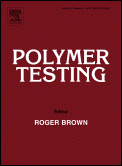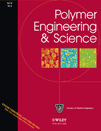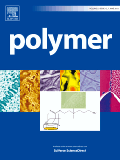
Journal of Polymer & Composites
Scope & Guideline
Connecting Researchers to Shape the Future of Composite Materials.
Introduction
Aims and Scopes
- Polymer Synthesis and Characterization:
Research on the development and characterization of new polymeric materials, including biodegradable polymers, nanocomposites, and functionalized polymers for specific applications. - Composite Material Development:
Exploration of composite materials, including fiber-reinforced composites and hybrid materials, with a focus on mechanical, thermal, and electrical properties for industrial applications. - Nanotechnology Applications in Polymers:
Investigation into the incorporation of nanomaterials (e.g., graphene, carbon nanotubes) into polymer matrices to enhance material properties and functionalities. - Sustainable and Eco-friendly Materials:
Research on the development of environmentally friendly materials, including biopolymers and composites derived from renewable resources, aimed at reducing environmental impact. - Advanced Manufacturing Techniques:
Examination of innovative manufacturing processes such as additive manufacturing (3D printing), thermoplastic processing, and smart material applications. - Performance Evaluation and Testing:
Studies that assess the mechanical, thermal, and structural performance of polymers and composites under various conditions, including fatigue, corrosion, and impact.
Trending and Emerging
- Biopolymer and Green Composite Research:
An increasing number of studies focus on the development of biopolymers and environmentally friendly composites, driven by the need for sustainable materials in various applications. - Nanocomposites and Enhanced Functionalities:
Significant interest in the incorporation of nanomaterials into polymer matrices to achieve enhanced mechanical, thermal, and electrical properties, reflecting advancements in nanotechnology. - Smart Materials and Applications:
Emerging research on smart materials that respond to environmental stimuli, such as shape memory polymers and self-healing composites, is gaining traction in various applications. - Advanced Characterization Techniques:
A growing emphasis on utilizing sophisticated characterization methods (e.g., FEA simulation, advanced microscopy) to better understand the properties and behaviors of polymers and composites. - Multifunctional and Hybrid Materials:
Research is increasingly focused on developing multifunctional materials that combine multiple properties for applications in fields such as aerospace, automotive, and biomedical engineering.
Declining or Waning
- Traditional Polymer Processing Techniques:
Research related to conventional methods such as extrusion and molding has decreased, possibly due to the growing interest in advanced manufacturing techniques like 3D printing. - Basic Polymer Physics:
Fundamental studies purely focused on the physical properties of polymers without application context are becoming less prevalent as the field moves towards application-driven research. - Comprehensive Reviews of Existing Technologies:
There is a noticeable reduction in review papers that summarize existing technologies in polymer and composite fields, indicating a shift toward original research and innovation.
Similar Journals

POLYMER SCIENCE SERIES B
Bridging Theory and Practice in Polymer StudiesPOLYMER SCIENCE SERIES B is a distinguished journal published by MAIK NAUKA/INTERPERIODICA/SPRINGER, dedicated to advancing knowledge in the fields of ceramics and composites, materials chemistry, and polymers and plastics. The journal, identifiable by its ISSN 1560-0904 and E-ISSN 1555-6123, spans a significant timeline from 1996 to 2024, reflecting its commitment to preserving and disseminating cutting-edge research in polymer science. With its current ranking in the Q3 category across relevant fields, it supports scholars and professionals in enhancing their understanding and application of polymeric materials. While it operates on a non-open access basis, the journal is pivotal for researchers seeking in-depth analysis and peer-reviewed studies. Located in the heart of the United States at 233 Spring St, New York, NY 10013-1578, POLYMER SCIENCE SERIES B serves as an essential resource for committed researchers, professionals, and students aiming to push the boundaries of polymer science.

Polymer-Plastics Technology and Materials
Advancing the Future of Polymer SciencePolymer-Plastics Technology and Materials is a premier academic journal published by Taylor & Francis Inc., dedicated to the dynamic fields of chemical engineering, materials chemistry, and polymers and plastics. With an impact factor that reinforces its reputation, this journal is strategically indexed in Scopus, ranked notably within its categories (Q2), showcasing its influence and relevance in the academic community. Since its inception in 2019, the journal has served as an essential platform for researchers, professionals, and students to disseminate innovative studies and advancements in polymer science and materials technology. As an Open Access publication, it ensures that cutting-edge research is accessible to a global audience, fostering collaboration and knowledge sharing in the material sciences. Located in the United Kingdom, Polymer-Plastics Technology and Materials continues to enhance the dialogue within the industry, addressing critical challenges and exploring emerging trends that shape the future of polymer and plastics technologies.

POLYMER TESTING
Empowering the Polymer Community with Open Access KnowledgePOLYMER TESTING is an esteemed academic journal published by Elsevier Science Ltd, focusing on advancements in the field of polymers and their applications. With a high impact factor and category quartiles reflecting its influence, it ranks in the Q1 quartile in both Organic Chemistry and Polymers and Plastics, indicating its crucial role in shaping research in these disciplines. The journal has been open access since 2021, ensuring that cutting-edge research is readily available to researchers, practitioners, and students alike. Covering the convergence of foundational and innovative studies from 1980 and continuing through 2024, POLYMER TESTING appeals to a diverse audience, from materials scientists to chemical engineers, providing a platform for high-quality peer-reviewed articles that advance our understanding of polymer behavior, performance, and applications. If you are looking to stay abreast of the latest trends and breakthroughs in polymer science, POLYMER TESTING is your go-to resource.

POLYMER ENGINEERING AND SCIENCE
Exploring the Science Behind PolymersPOLYMER ENGINEERING AND SCIENCE, published by WILEY, is a premier journal specializing in the field of polymer science and engineering. Since its inception in 1961, this journal has been at the forefront of disseminating high-quality research, focusing on various aspects of polymers and plastics, including their chemistry, properties, and applications. With an impressive impact factor, it ranks in the second quartile (Q2) across multiple categories, including Chemistry (Miscellaneous), Materials Chemistry, and Polymers and Plastics, showcasing the journal's significance and influence in these vital areas of research. Researchers and professionals in academia and industry will find the latest advancements and innovative methodologies in polymer science, making this journal an essential resource for those looking to stay updated on cutting-edge developments. While it does not currently support Open Access, its comprehensive scope and critical insights positioned it as a valuable platform for advancing knowledge and fostering collaboration within the polymer community. The journal’s office is located at 111 River St, Hoboken 07030-5774, NJ, United States, emphasizing its strong presence in the academic landscape.

POLYMER INTERNATIONAL
Transforming Ideas into Polymer InnovationsPOLYMER INTERNATIONAL is a leading journal in the field of polymer science, published by Wiley, one of the most esteemed scholarly publishers. With an ISSN of 0959-8103 and an E-ISSN of 1097-0126, this journal has been a pivotal platform for researchers since its inception in 1991, now extending its coverage until 2024. The journal boasts a commendable standing in various scientific domains, achieving a Q2 quartile ranking in Materials Chemistry, Organic Chemistry, and Polymers and Plastics as of 2023. Additionally, it holds impressive Scopus ranks, including Rank #47 in Organic Chemistry and Rank #40 in Polymers and Plastics, placing it within the top percentiles of its categories. Researchers, professionals, and students alike can benefit from its rich array of articles that contribute to the understanding and advancement of polymer technology and materials science. Although not an open access journal, POLYMER INTERNATIONAL remains crucial for disseminating high-quality research that drives innovation and development within the field.

EUROPEAN POLYMER JOURNAL
Advancing Polymer Science with ExcellenceEUROPEAN POLYMER JOURNAL is a leading academic journal published by PERGAMON-ELSEVIER SCIENCE LTD, dedicated to advancing the field of polymer science and engineering. With a distinguished history since 1965, this journal serves as a critical platform for researchers to disseminate high-quality research findings within a broad scope that encompasses materials chemistry, organic chemistry, and physics. The journal boasts an impressive Q1 category ranking in multiple fields, including Materials Chemistry, Organic Chemistry, and Polymers and Plastics, placing it in the top tier of academic journals worldwide. Its standing is further reinforced by its high citation metrics, with ranks such as #16 in Organic Chemistry and #20 in Polymers and Plastics, reflecting its significant contribution to the advancement of knowledge and innovation in these areas. Although currently not available as an open-access journal, it provides subscribers with in-depth studies, reviews, and insights relevant to both academia and industry. Researchers, professionals, and students alike will find invaluable information and emerging trends in polymer research, making the EUROPEAN POLYMER JOURNAL an essential resource for staying at the forefront of this dynamic and evolving field.

POLYMER
Fostering Excellence in Polymer ResearchPOLYMER, an esteemed journal published by Elsevier Science Ltd, stands at the forefront of polymer science, presenting cutting-edge research that encompasses the realms of Materials Chemistry, Organic Chemistry, and Polymers and Plastics. With a remarkable impact factor reflecting its significance in the academic community, POLYMER has been a vital resource since its inception in 1960, contributing to a converged body of knowledge through to 2024. Rated Q1 in all relevant categories as of 2023, and boasting impressive Scopus rankings, this journal not only facilitates advanced discussions in polymer synthesis, characterization, and applications but also serves as a critical platform for collaborative research among scholars, professionals, and students. While it offers content primarily via subscription, POLYMER remains dedicated to fostering innovation and excellence in the field, making it an essential read for anyone passionate about polymer science.

Advanced Industrial and Engineering Polymer Research
Driving Excellence in Chemical EngineeringAdvanced Industrial and Engineering Polymer Research (ISSN: 2542-5048), published by KEAI PUBLISHING LTD, stands as a pivotal Open Access journal dedicated to the cutting-edge advancements within the fields of materials science and polymer engineering. Established in 2018, this journal aims to foster innovation and disseminate high-quality research that spans the realms of chemical engineering, industrial and manufacturing processes, and polymer applications. With impressive category quartile rankings in Q1 across various disciplines—including Chemical Engineering, Industrial and Manufacturing Engineering, and Materials Science—this journal represents a significant resource for researchers, industry professionals, and students alike. Offering access from its headquarters in Beijing, China, and embracing a commitment to open access since its inception, Advanced Industrial and Engineering Polymer Research ensures that groundbreaking findings are readily available, facilitating collaboration and enhancing knowledge in the global scientific community.

POLYMERS & POLYMER COMPOSITES
Unveiling Breakthroughs in Material SciencePOLYMERS & POLYMER COMPOSITES, published by SAGE Publications Ltd, is a prestigious journal dedicated to the exploration of significant advancements in the diverse fields of polymers, composite materials, and their innovative applications. With an ISSN of 0967-3911 and E-ISSN of 1478-2391, this journal plays a crucial role in the academic community, boasting an impressive ranking in the Q2 quartile across pivotal categories such as Ceramics and Composites, Materials Chemistry, and Polymers and Plastics in 2023. Positioned in the United Kingdom, it serves as a vital resource for researchers and professionals, providing insights into current trends and future directions in material science. Despite its availability not extending to Open Access, the journal aims to promote rigorous peer-reviewed research, thus fostering knowledge and collaboration among scholars. With publication convergence from 1993 to 2024, POLYMERS & POLYMER COMPOSITES stands as a cornerstone for those pursuing advanced understanding and excellence in material innovation.

International Journal of Polymer Science
Transforming Ideas into Polymer SolutionsInternational Journal of Polymer Science is a prominent and peer-reviewed journal dedicated to advancing the field of polymer science. Published by Hindawi Ltd, this open-access journal has been making significant contributions to the discipline since its inception in 2009, ensuring that research findings are accessible to a global audience. With an impressive impact factor and positioned in the Q2 quartile for Polymers and Plastics as of 2023, it ranks 46th out of 161 in the Scopus database, reflecting its strong standing in the research community. The journal welcomes innovative research across various topics within polymer science, including synthesis, characterization, and applications in diverse industries. By providing a platform for scholars, professionals, and students, the International Journal of Polymer Science not only encourages the dissemination of knowledge but also fosters collaboration and innovation in this essential field. Based in Egypt and operating under a rigorous selection process, it remains a vital resource for anyone involved in polymer research.